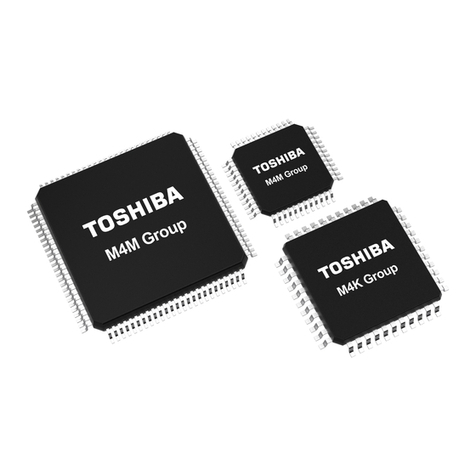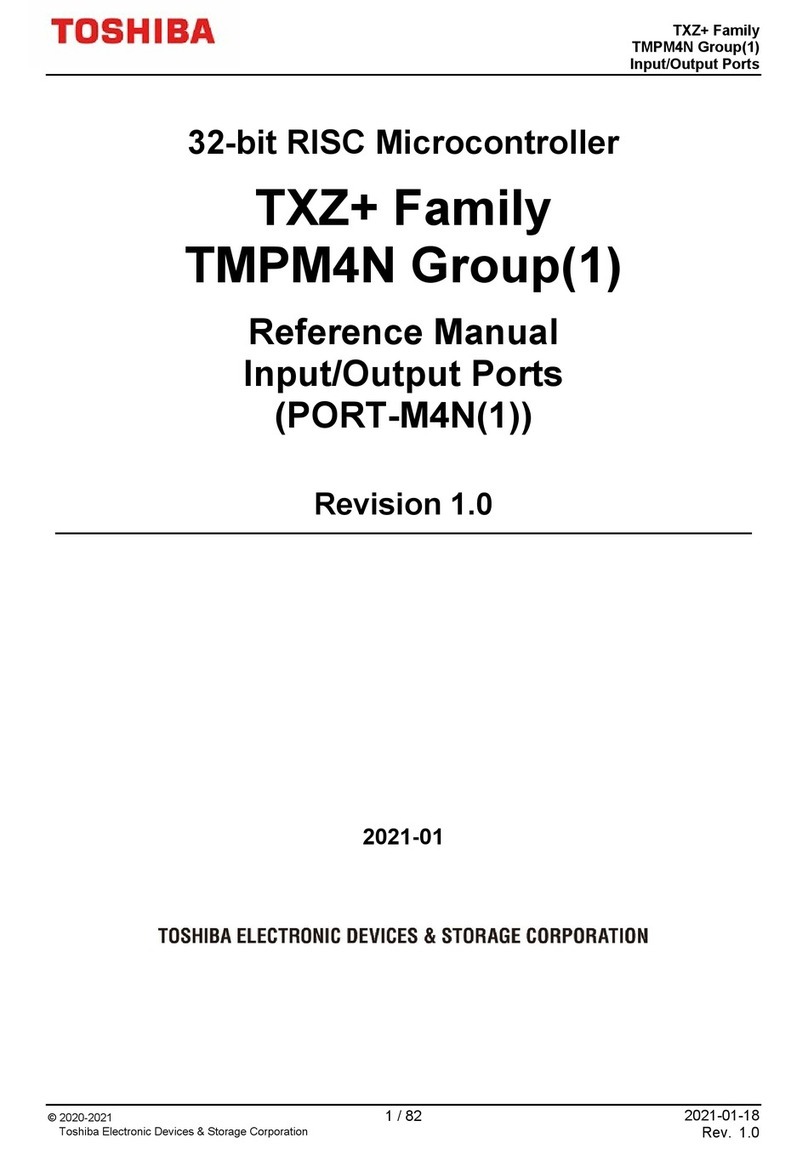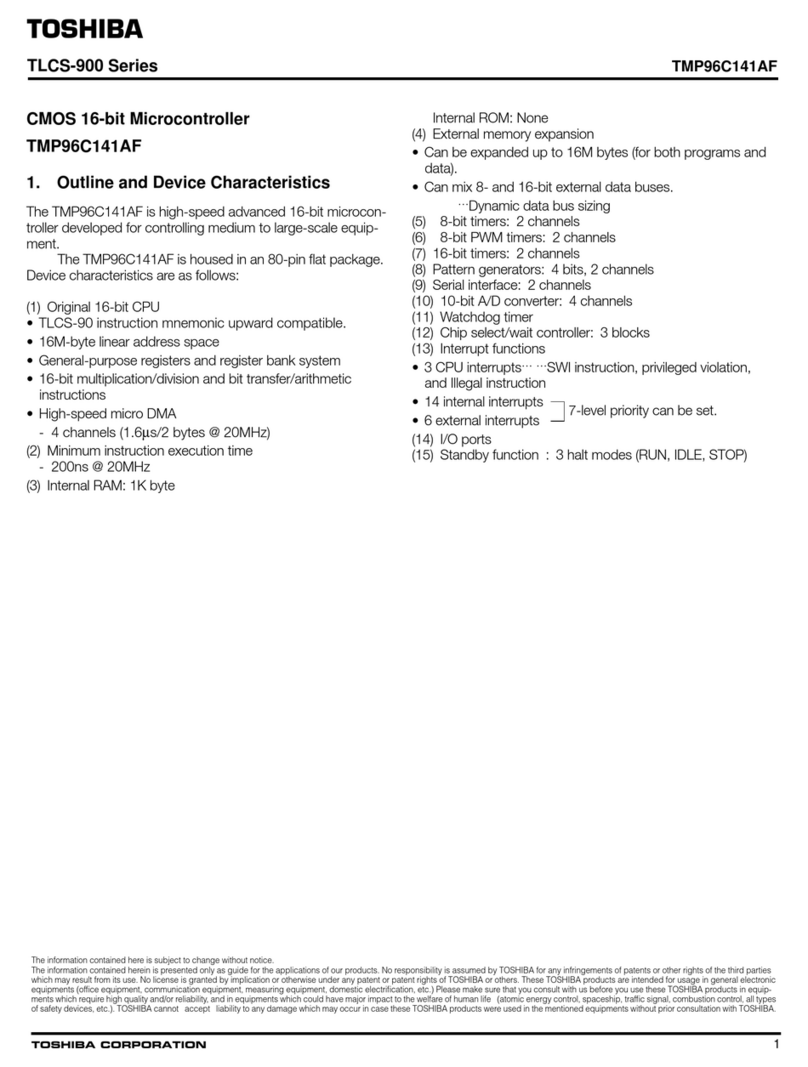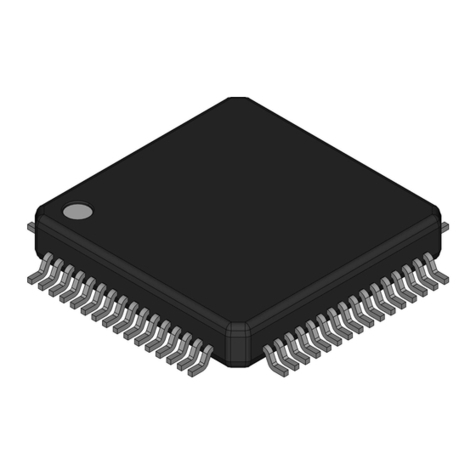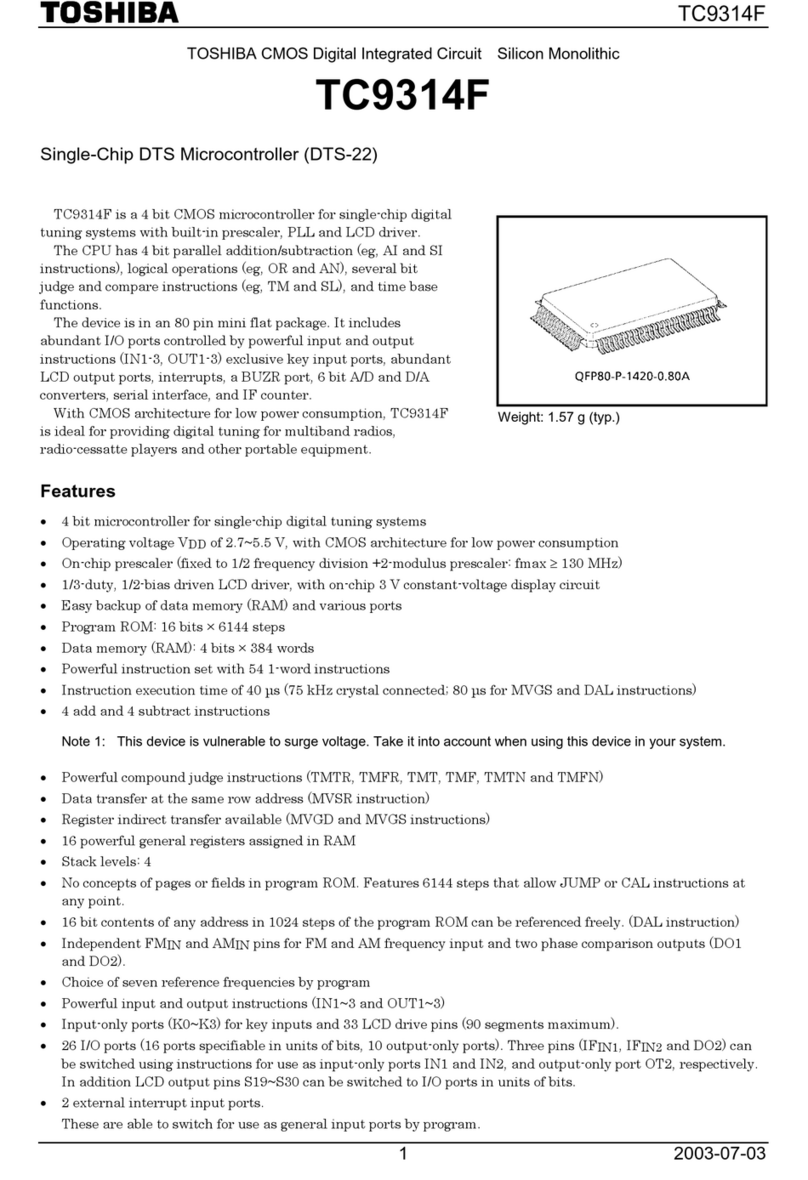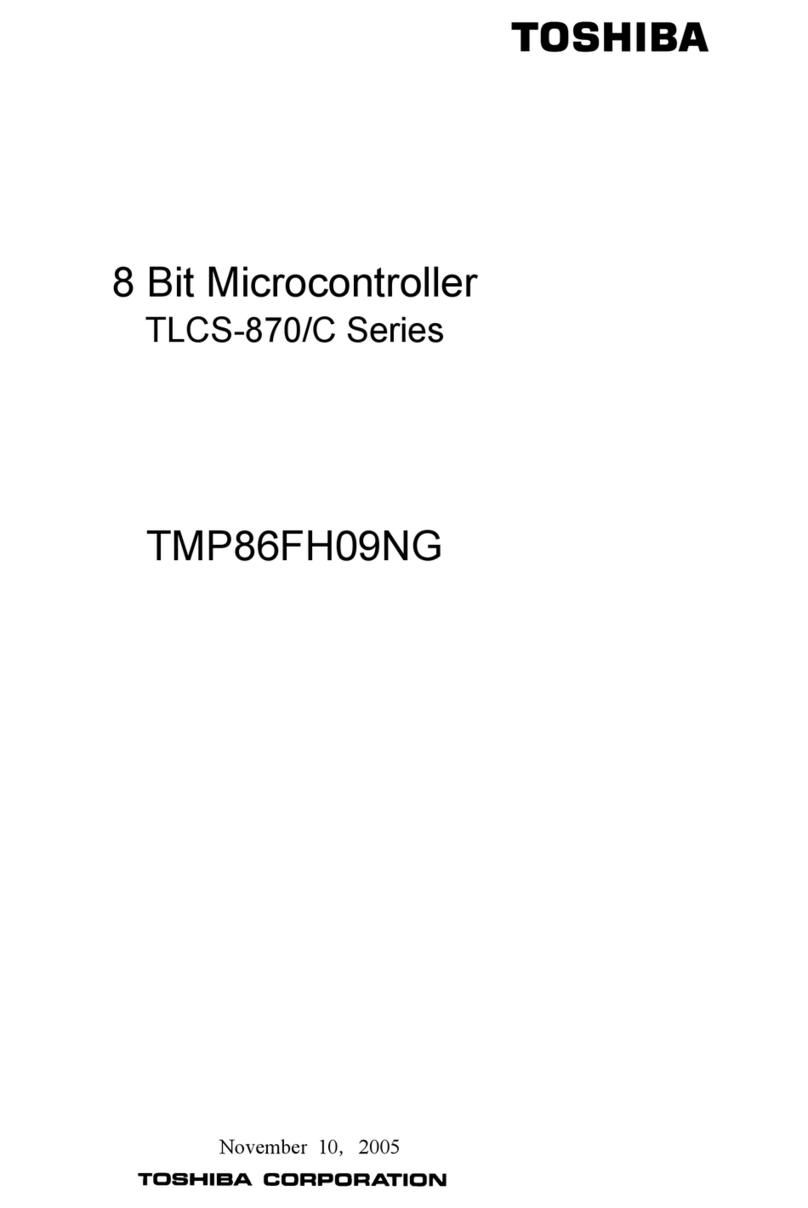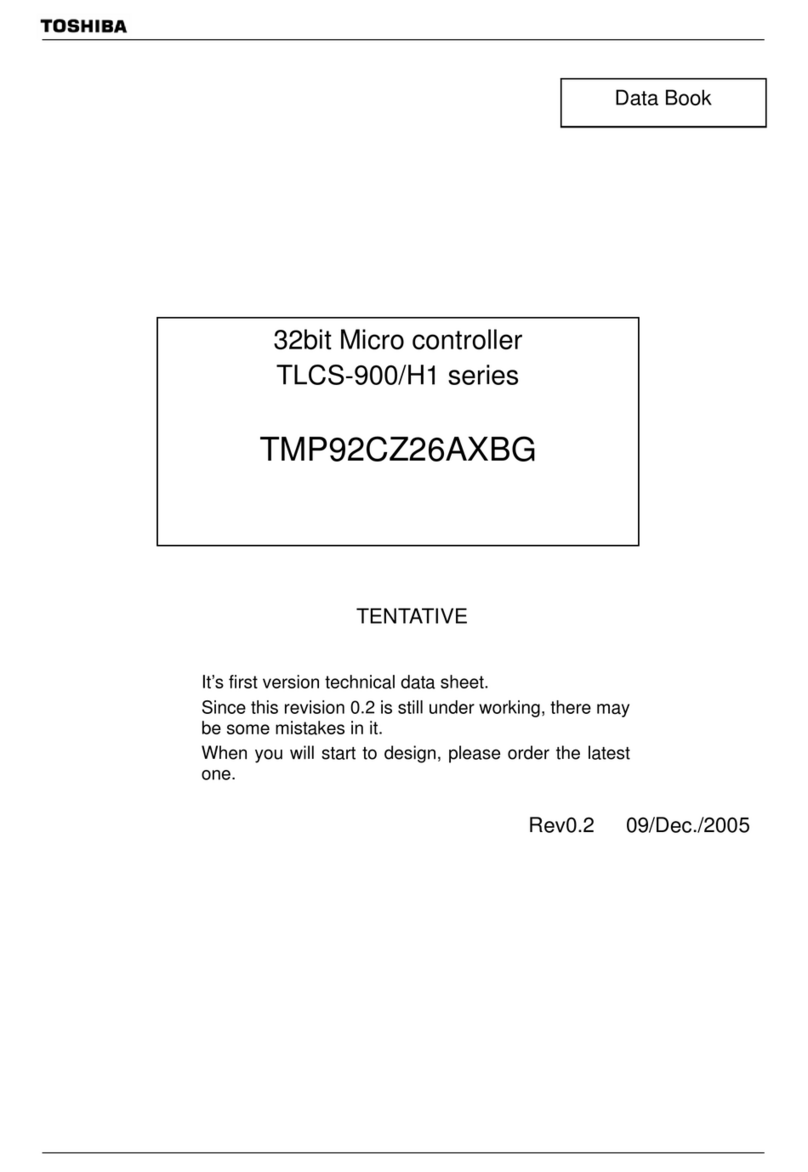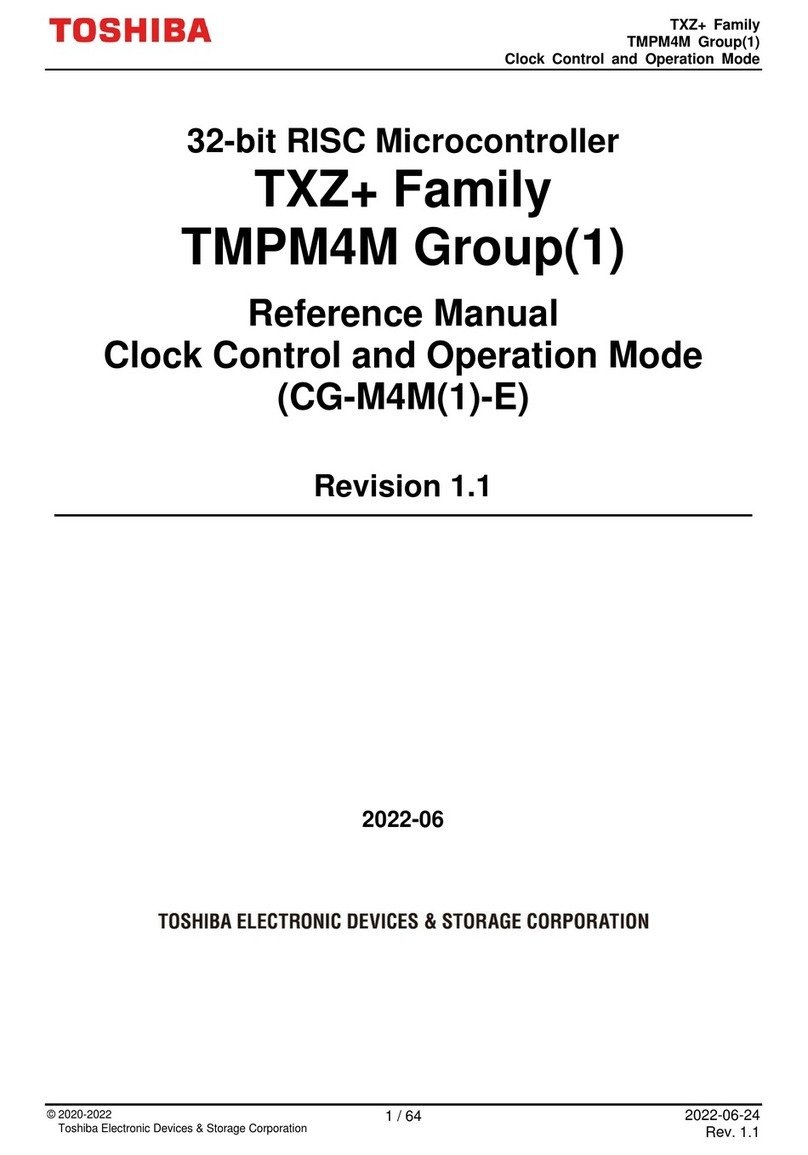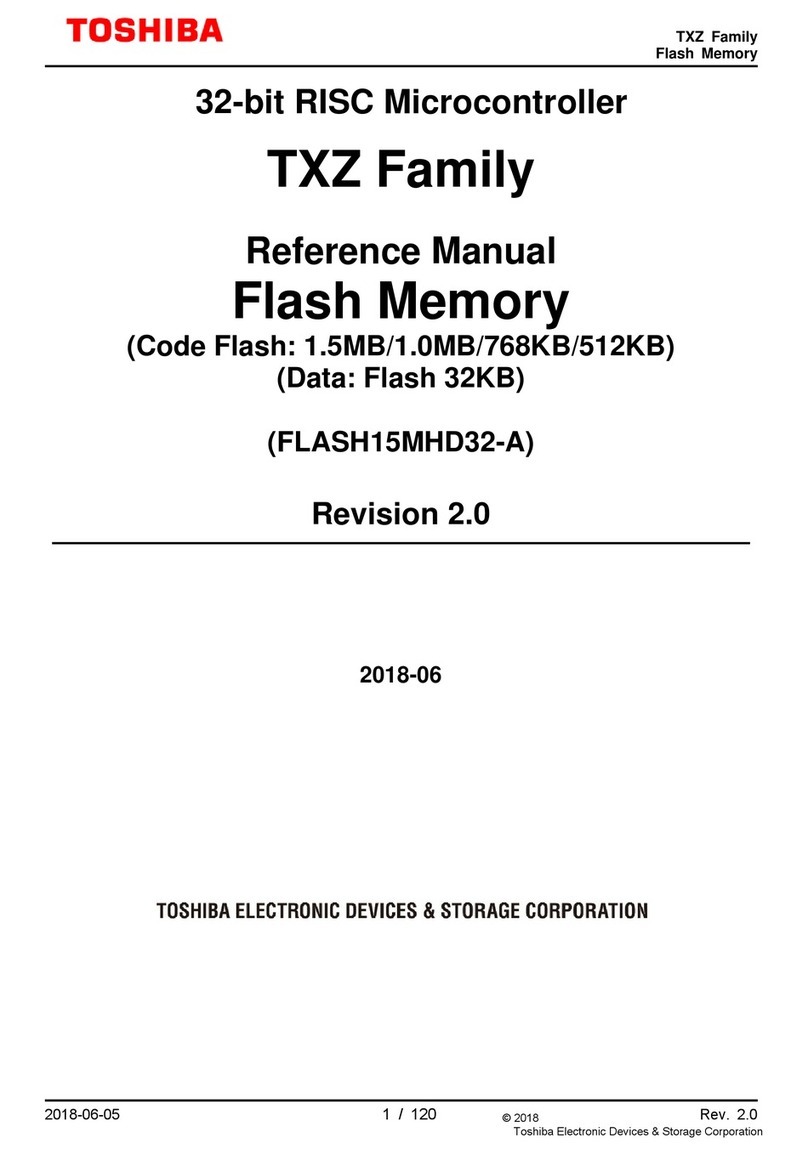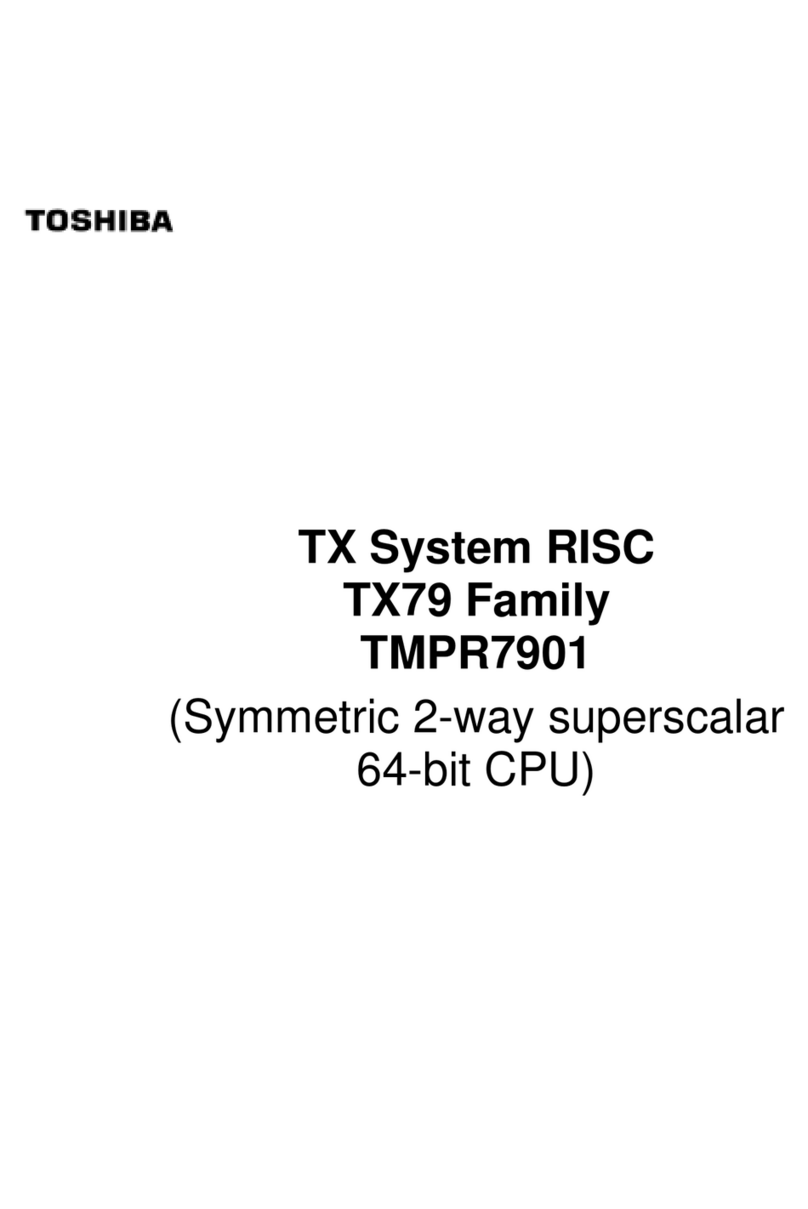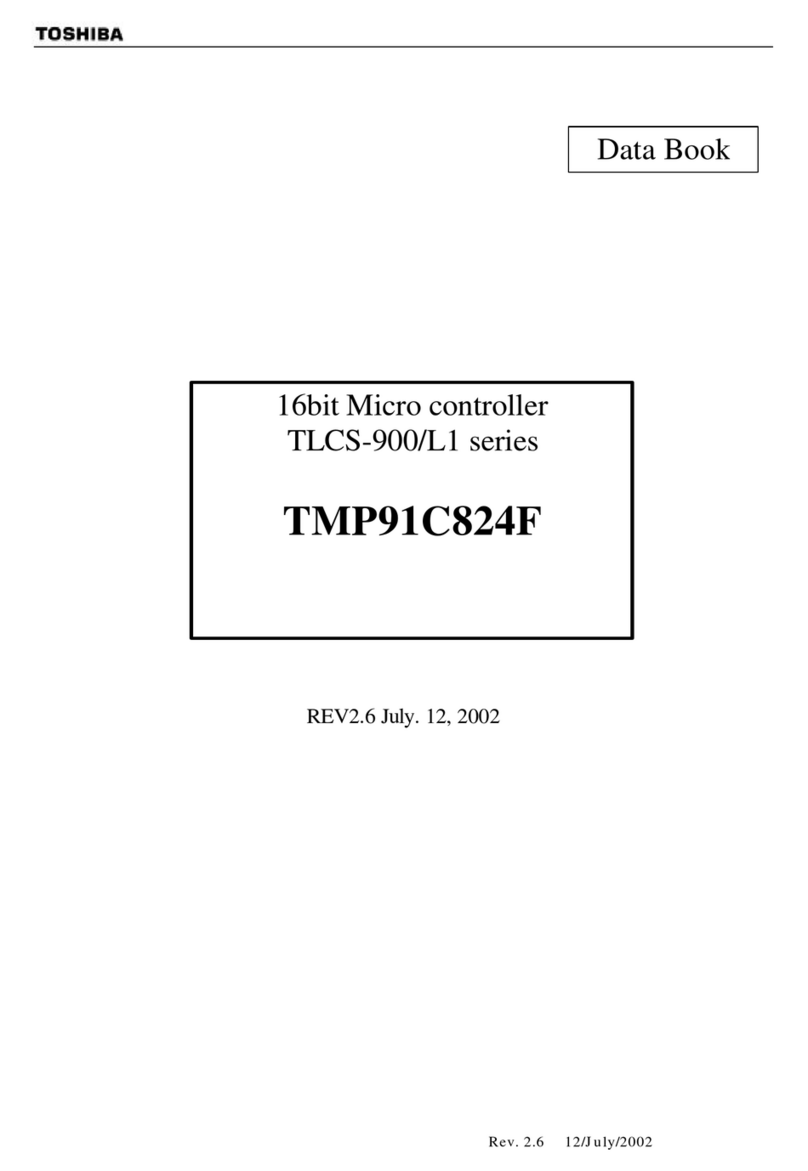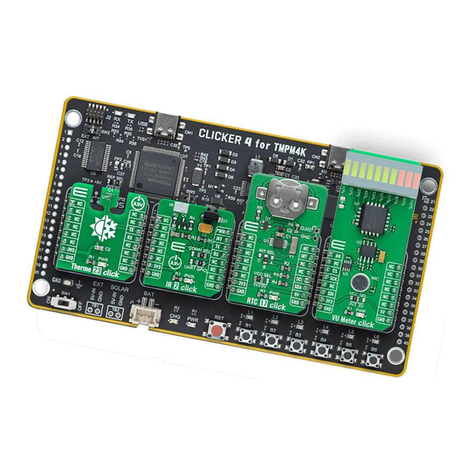
TMP92CH21
2009-06-19
92CH21-6
2.2 PAD Assignment
(Chip size 5.98 mm ×6.42 mm)
Table 2.2.1 Pad Assignment Diagram (144-pin chip) Unit: μm
Pin
No Name X
Point Y
Point Pin
No Name X
Point Y
Point Pin
No Name X
Point Y
Point
1 VREFL −2852 2671 49 DVSS2 −488 −3072 97 P55 2848 815
2 VREFH −2852 2546 50 DVCC2 −338 −3072 98 P56 2848 941
3 PG0 −2852 2421
51 D0 −200 −3072 99 P57 2848 1066
4 PG1 −2852 2296 52 D1 −75 −3072 100 P60 2848 1191
5 PG2 −2852 2171 53 D2 49 −3072 101 P61 2848 1316
6 PG3 −2852 2045
54 D3 174 −3072 102 P62 2848 1441
7 P96 −2852 1920 55 D4 300 −3072 103 P63 2848 1566
8 P97 −2852 1795 56 D5 425 −3072 104 DVCC3 2848 1692
9 PA3
−2852 1270
57 D6 550 −3072 105 P64 2848 1823
10 PA4 −2852 1145 58 D7 675 −3072 106 P65 2848 1974
11 PA5 −2852 1020 59 P10 800 −3072 107 P66 2848 2130
12 PA6 −2852 895 60 P11 925 −3072 108 P67 2848 2292
13 PA7 −2852 769 61 P12 1050 −3072 109 P70 2460 3065
14 P90 −2852 644 62 P13 1176 −3072 110 P71 2295 3065
15 P91 −2852 519 63 P14 1301 −3072 111 P72 2127 3065
16 P92 −2852 394 64 P15 1426 −3072 112 P73 1964 3065
17 P93 −2852 269 65 P16 1551 −3072 113 P74 1807 3065
18 P94 −2852 144 66 P17 1676 −3072 114 P75 1654 3065
19 P95 −2852 18 67 P20 1801 −3072 115 P76 1506 3065
20 PC2 −2852 −106 68 P21 1927 −3072 116 P80 1361 3065
21 PL0 −2852 −231 69 P22 2052 −3072 117 PC6 1226 3065
22 PL1 −2852 −356 70 P23 2177 −3072 118 P81 1101 3065
23 PL2 −2852 −481 71 P24 2303 −3072 119 P82 976 3065
24 PL3 −2852 −606 72 P25 2460 −3072 120 P83 851 3065
25 PL4 −2852 −732 73 P26 2848 −2279 121 P84 726 3065
26 PL5 −2852 −857 74 P27 2848 −2138 122 P85 600 3065
27 PL6 −2852 −982 75 P30 2848 −1982 123 P86 475 3065
28 PL7 −2852 −1107 76 P31 2848 −1831 124 P87 350 3065
29 PK0 −2852 −1232 77 P32 2848 −1687 125 PC7 225 3065
30 PK1 −2852 −1357 78 P33 2848 −1562 126 PF0 100 3065
31 PK2 −2852 −1482 79 P34 2848 −1437 127 PF1 −24 3065
32 PK3 −2852 −1608 80 P35 2848 −1311 128 PF2 −150 3065
33 PM2 −2852 −1892 81 DVSS3 2848 −1186 129 PC0 −275 3065
34 PM1 −2852 −2017 82 P36 2848 −1061 130 PC1 −400 3065
35 XT1 −2852 −2142 83 P37 2848 −936 131 PF7 −525 3065
36 XT2 −2852 −2444 84 P40 2848 −811 132 PJ0 −650 3065
37 DVCC4 −2465 −3072 85 P41 2848 −686 133 PJ1 −775 3065
38 TEST −2339 −3072 86 P42 2848 −560 134 PJ2 −901 3065
39 D+−2062 −3072 87 P43 2848 −435 135 PJ3 −1026 3065
40 D−−1875 −3072 88 P44 2848 −310 136 PJ4 −1151 3065
41 DVCC1 −1598 −3072 89 P45 2848 −185 137 PJ5 −1276 3065
42 X1 −1472 −3072 90 P46 2848 −60 138 PJ6 −1401 3065
43 DVSS1 −1347 −3072 91 P47 2848 65 139 PJ7 −1526 3065
44 X2 −1126 −3072 92 P50 2848 190 140 PA0 −1652 3065
45 AM0 −1001 −3072 93 P51 2848 315 141 PA1 −1777 3065
46 AM1 −876 −3072 94 P52 2848 440 142 PA2 −1902 3065
47 RESET −750 −3072 95 P53 2848 565 143 AVSS −2275 3065
48 PC3 −625 −3072 96 P54 2848 690 144 AVCC −2400 3065
